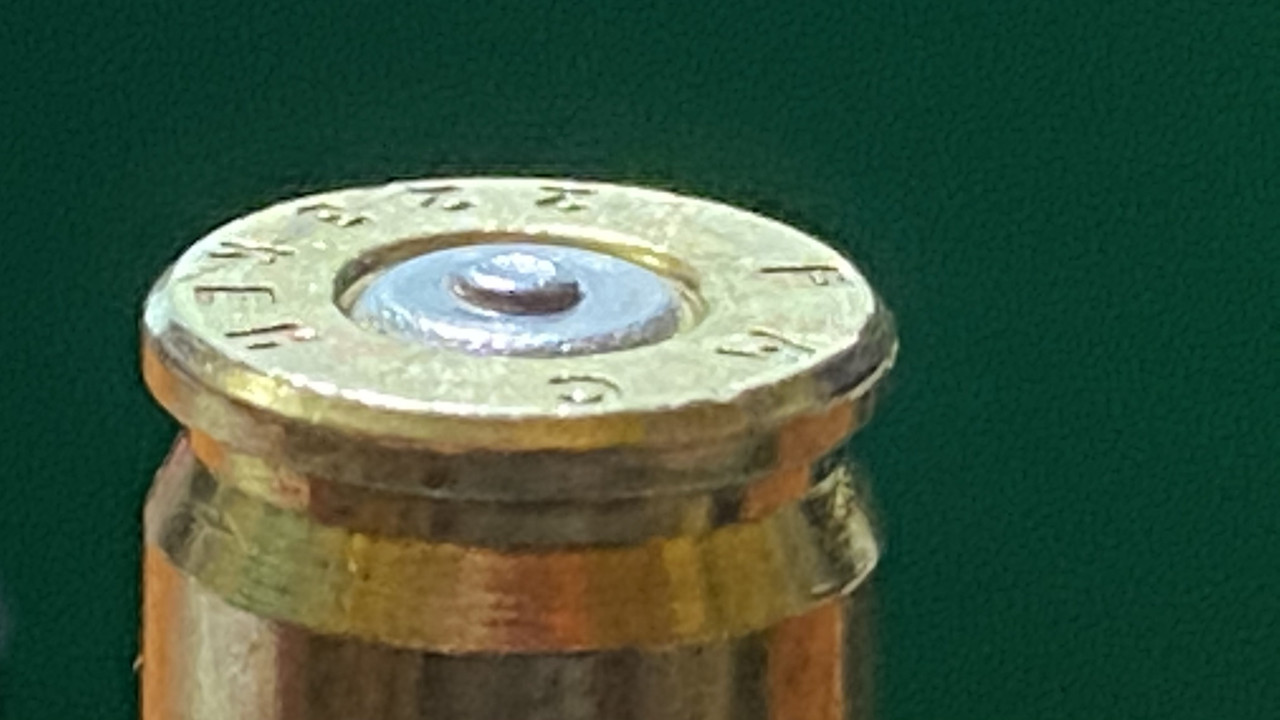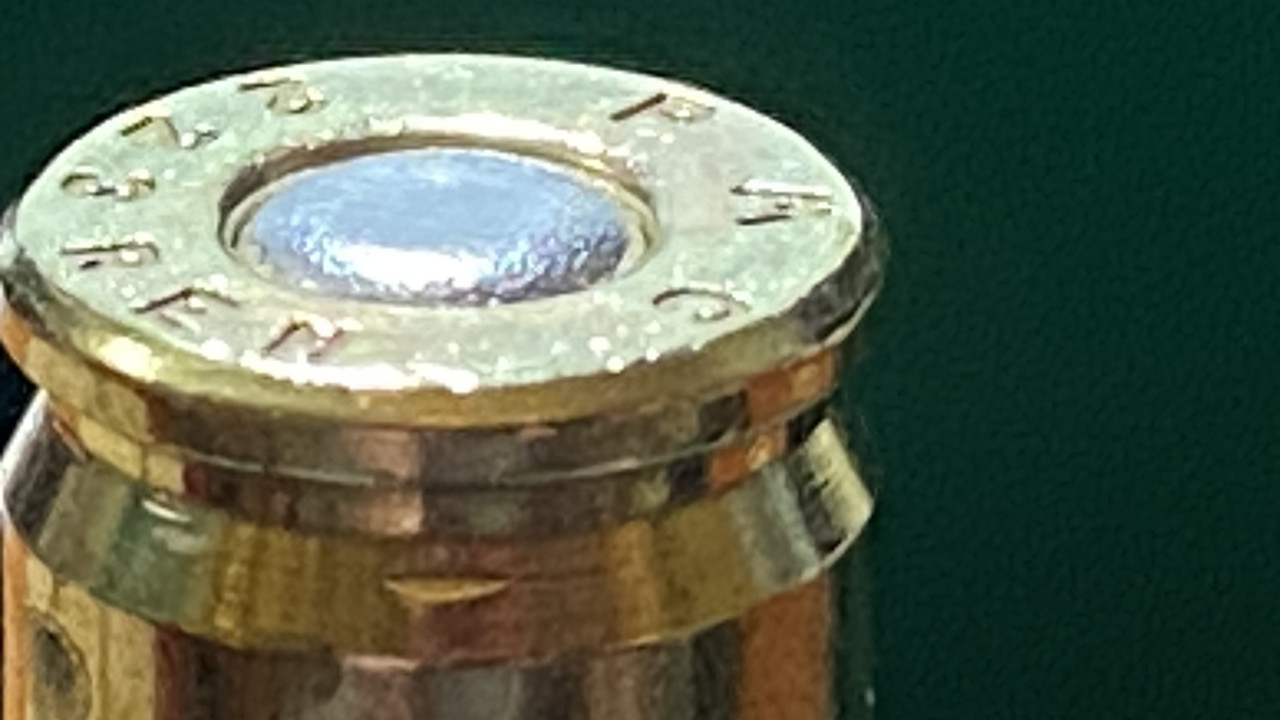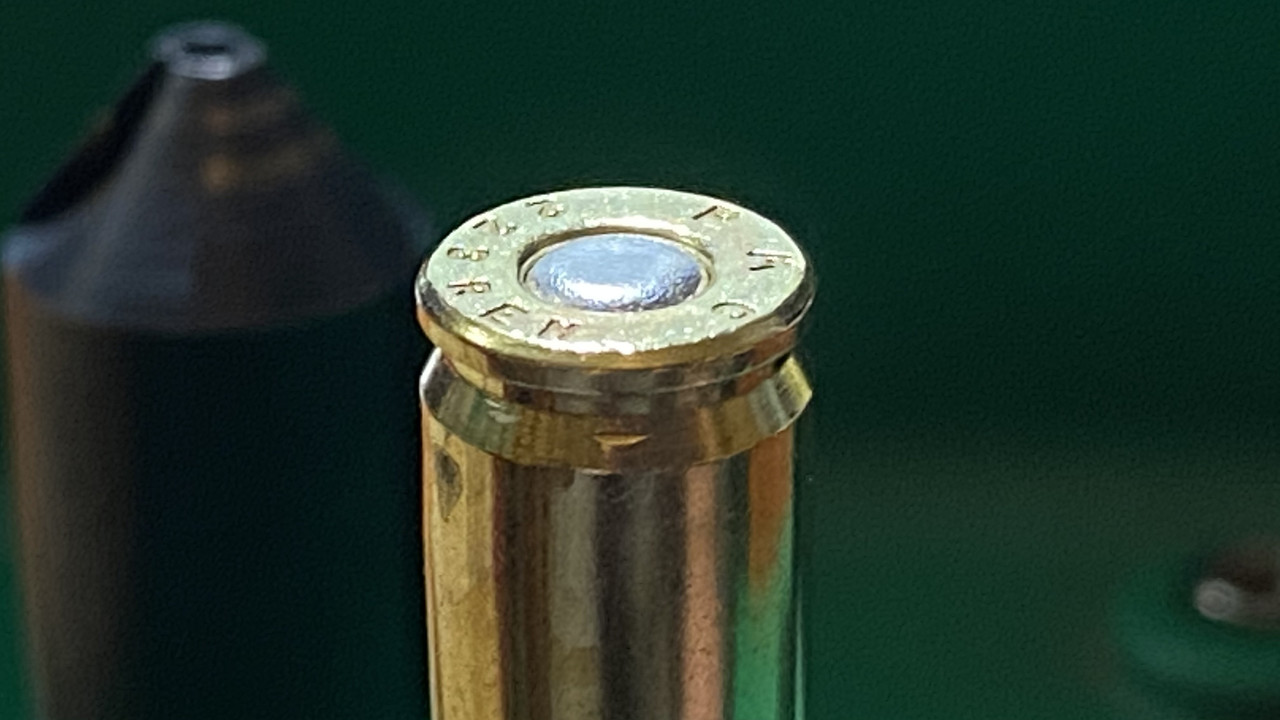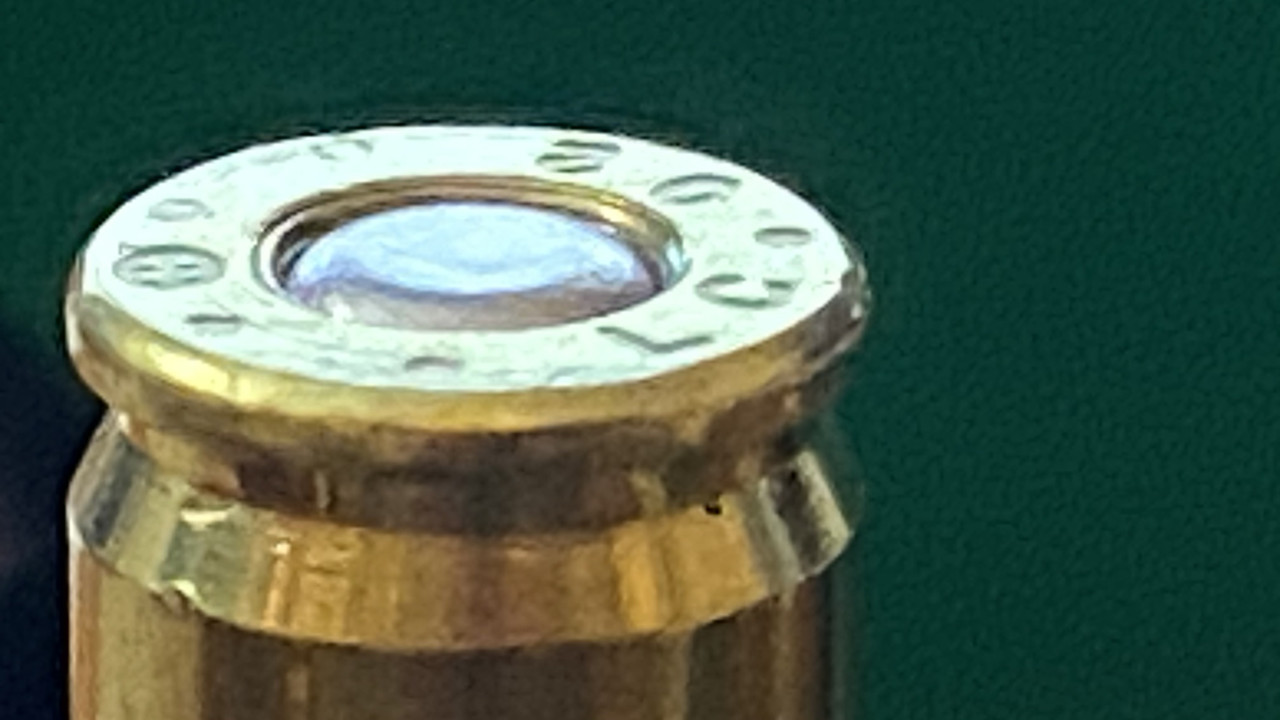I'm trying to come to an understanding as to what's causing damaging dents in the side of my cases after being fired and what options I have to control it. My initial conclusion was too much gas.
Here's my combination, AR15, DI;
-16" barrel, mid length gas system
-Superlative Arms adjustable gas block in restrictive mode
-Rubber City Armory lightweight titanium BCG (not their ultralight skeletonized version)
-Odin Works adjustable buffer, currently with no weights inside
-Springco Red buffer spring
It's cycling fine. I had a Strike Industries flat wire spring and went back to the Springco Red, which is firmer, opening up the gas a bit and then back down until it didn't lock the bolt open on an empty mag. Opened it up a bit and still had the dents. My initial thought was it was over gassed with the Strike Industries spring combo so I tried the Springco Red again. No luck.
It'll feed/cycle no problem but I'm leaving nice dents in the side of my cases. I went out to test various loads today and the case denting became progressively better throughout the test. The upper is entirely new, I've shot less than 100 rounds through it prior to today's testing. I did four different bullet weights today and it became better (dent size lessened) with the heavier bullets. Not sure if this is a coincidence? I started out with 52gr, then 55, 68 and finally 73gr. The 67's and 75's ranged from very light dents to none at all. The cases which housed the 52's are not reloadable again. This is a problem as I have a LOT of the 52gr. bullets and I can practically put five of them in the same hole. It'll make a nice plinking round.
Photo of the cases. It's a hard crease, definitely not reusable:

Corresponding photo of the deflector. One question I keep asking myself is it partially caused by the shape/design of the deflector? There's a steep shoulder with a sharp edge which leads out to the deflector's extension. Notice the excellent product placement in said photo.
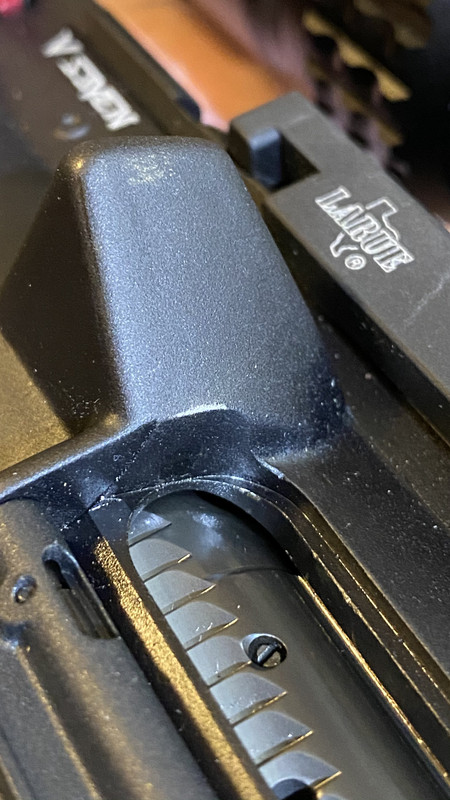
I'm guessing (and looking for input)I could add weight to the buffer and possibly slow down the cycle enough that the cases wouldn't be ejected so violently. I have no problems with the recoil impulse although I had one load, with the 67gr. bullet which was extremely soft-shooting. Like amazingly so and very noticeable from the other rounds.
I haven't tried the bleed off mode on the Superlative Arms gas block, was sort of saving that for when I acquire a suppressor. Not sure it'd change much.
One other wrench is I had a bit of a neck tension issue which I'm working out but I can't see if this would affect ejection
I'm headed back out tomorrow morning to test more loads, I have some 50gr. as well as some 77gr. Sierra TMK's amongst others. I had high hopes for the Hornady 73gr. ELD Match but the hotter the load, the worse the grouping was. The others were all better across the board. Barrel is a 1:8 twist.
Here's my combination, AR15, DI;
-16" barrel, mid length gas system
-Superlative Arms adjustable gas block in restrictive mode
-Rubber City Armory lightweight titanium BCG (not their ultralight skeletonized version)
-Odin Works adjustable buffer, currently with no weights inside
-Springco Red buffer spring
It's cycling fine. I had a Strike Industries flat wire spring and went back to the Springco Red, which is firmer, opening up the gas a bit and then back down until it didn't lock the bolt open on an empty mag. Opened it up a bit and still had the dents. My initial thought was it was over gassed with the Strike Industries spring combo so I tried the Springco Red again. No luck.
It'll feed/cycle no problem but I'm leaving nice dents in the side of my cases. I went out to test various loads today and the case denting became progressively better throughout the test. The upper is entirely new, I've shot less than 100 rounds through it prior to today's testing. I did four different bullet weights today and it became better (dent size lessened) with the heavier bullets. Not sure if this is a coincidence? I started out with 52gr, then 55, 68 and finally 73gr. The 67's and 75's ranged from very light dents to none at all. The cases which housed the 52's are not reloadable again. This is a problem as I have a LOT of the 52gr. bullets and I can practically put five of them in the same hole. It'll make a nice plinking round.
Photo of the cases. It's a hard crease, definitely not reusable:

Corresponding photo of the deflector. One question I keep asking myself is it partially caused by the shape/design of the deflector? There's a steep shoulder with a sharp edge which leads out to the deflector's extension. Notice the excellent product placement in said photo.

I'm guessing (and looking for input)I could add weight to the buffer and possibly slow down the cycle enough that the cases wouldn't be ejected so violently. I have no problems with the recoil impulse although I had one load, with the 67gr. bullet which was extremely soft-shooting. Like amazingly so and very noticeable from the other rounds.
I haven't tried the bleed off mode on the Superlative Arms gas block, was sort of saving that for when I acquire a suppressor. Not sure it'd change much.
One other wrench is I had a bit of a neck tension issue which I'm working out but I can't see if this would affect ejection
I'm headed back out tomorrow morning to test more loads, I have some 50gr. as well as some 77gr. Sierra TMK's amongst others. I had high hopes for the Hornady 73gr. ELD Match but the hotter the load, the worse the grouping was. The others were all better across the board. Barrel is a 1:8 twist.

